

James Wong
2026 Audi SQ5 review: Quick drive
6 Days Ago
The Mitsubishi ASX may be ancient by class standards but it still has some charm – just stick to the more affordable variants.
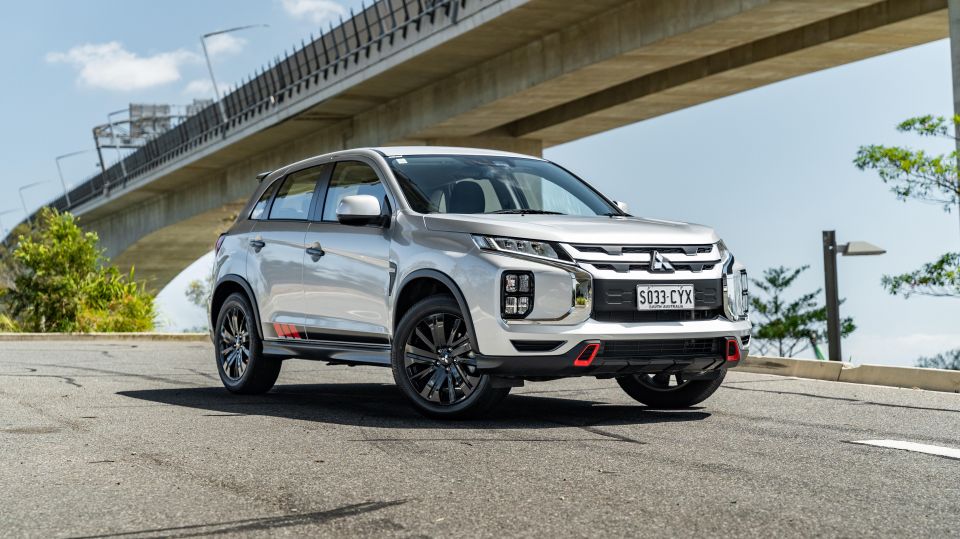
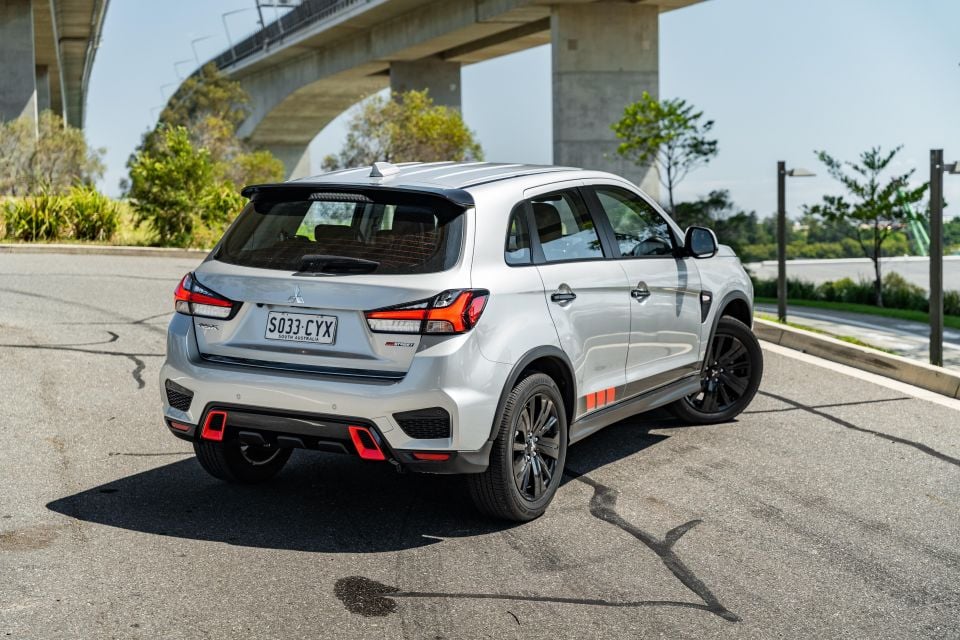

Quickly see how this car stacks up against its competition. Select any benchmark to see more details.
Where expert car reviews meet expert car buying – CarExpert gives you trusted advice, personalised service and real savings on your next new car.
We keep expecting the Mitsubishi ASX to expire, and year after year it keeps being renewed.

It was launched back in 2010, back when Julia Gillard was our Prime Minister, and has had four facelifts since then – the most recent being in 2019.
Yes, this is one old car, easily the oldest in its segment. And since its 2010 launch, versions with turbo-diesel power, all-wheel drive, and even Peugeot and Citroen badging have come and gone.
Though it no longer tops the sales charts in its segment, it remains an extremely popular option.
I last drove an ASX four years ago, and it hasn’t changed since then except for the usual reshuffling of the model lineup. A lot has changed in the small SUV segment since then, however.
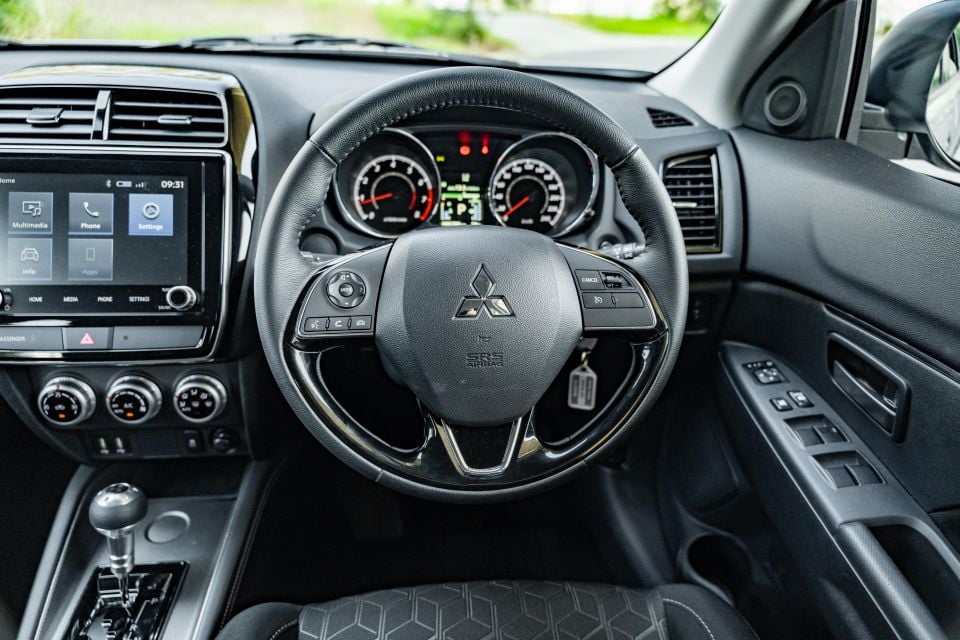
The MG ZS has become Australia’s best-selling small SUV, and the GWM Haval Jolion and Chery Omoda 5 have come along to give local buyers additional modern but affordable Chinese offerings.
Most of these Chinese SUVs offer similarly tempting prices to the ASX, but much longer lists of standard safety equipment.
For 2024, Mitsubishi introduced an ES Street package for the ASX ES, and we’ve put this to the test here.

Given it costs $2500 more than the ES for cosmetic upgrades – detailed further below – and no extra performance, it isn’t our pick of the range.
Best to stick with the standard ES, which would have earned a better value for money score, or get the LS which costs the same as an ASX with the ES Street package but packs more safety and convenience features.
| Model | Price before on-roads |
|---|---|
| Mitsubishi ASX GS 2.0 manual | $24,490 |
| Mitsubishi ASX GS 2.0 CVT | $26,740 |
| Mitsubishi ASX ES 2.0 CVT | $27,990 |
| Mitsubishi ASX MR 2.0 CVT | $29,740 |
| Mitsubishi ASX ES Street 2.0 CVT | $30,490 |
| Mitsubishi ASX LS 2.0 CVT | $30,490 |
| Mitsubishi ASX GSR 2.4 CVT | $32,740 |
| Mitsubishi ASX Exceed 2.4 CVT | $35,240 |
To see how the Mitsubishi ASX lines up against the competition, check out our comparison tool.
Buy your new car without the stress. It's fast, simple and completely free.

Great service from Travis and team, second time I have used this business would not hesitate to recommend them to anyone
Craig C.
Purchased a Ford Ranger in Sunshine Coast, QLD
CarExpert helped Craig save $7,224 on his Ford Ranger, now let us save you on your next new car.
Get your BEST priceFor something this old, the interior actually has held up pretty well.
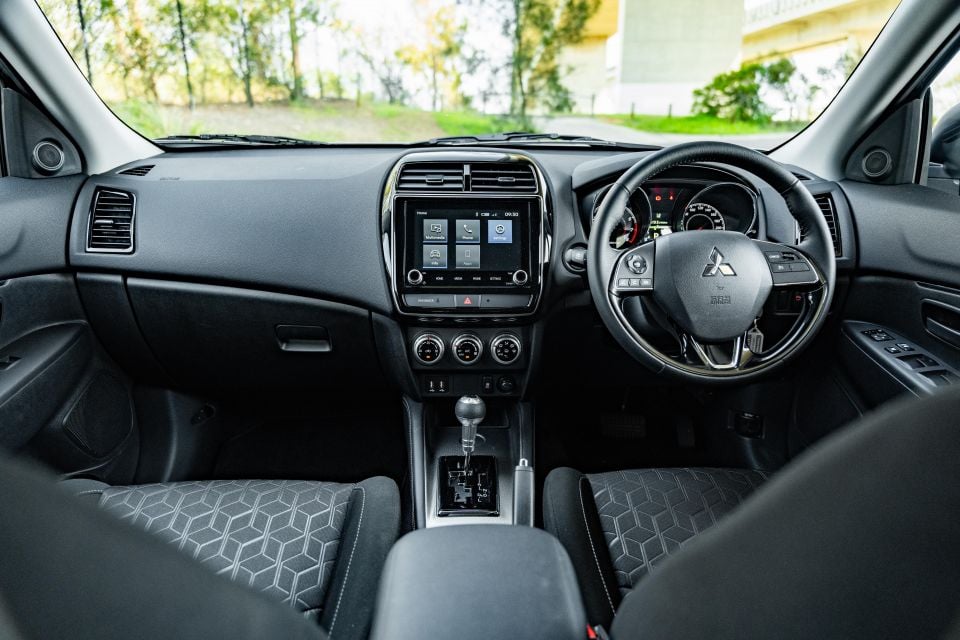
The doors feel a little light and tinny, which while making it easier for kids to enter the car doesn’t set the best first impression.
Then you sit down and see an instrument cluster and an overall dashboard layout that haven’t changed since 2010, and things are off to a wobbly start.
Speaking of wobbles, that centre console bin lid is exceptionally wobbly, while the climate control knobs look like they once held custard tarts and the headliner looks like mouse fur. It initially all seems a bit cheap and old – the latter of which makes sense, given this is a 14-year-old car.
Look a bit closer, however, and the ASX (mostly) holds up to scrutiny.
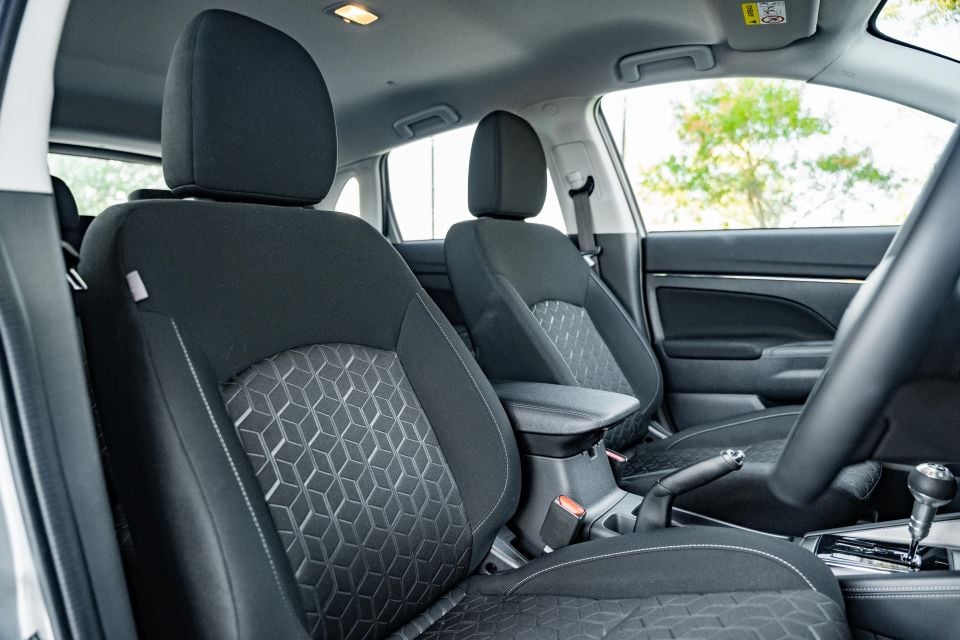
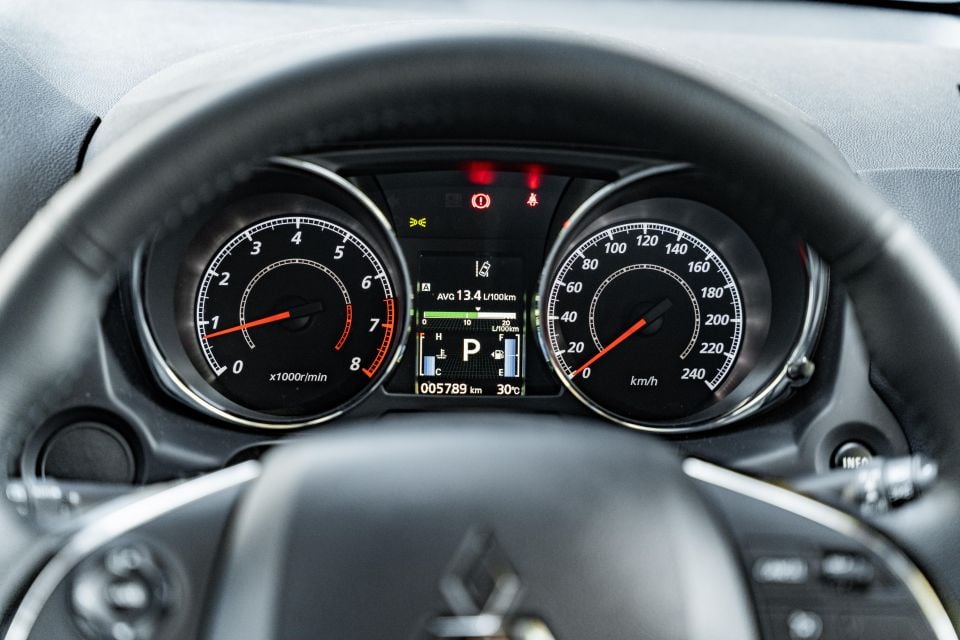
Those tacky fan speed and temperature knobs are still infinitely preferable to touchscreen-based climate controls. Gloss black trim is used sparingly, and only in places you’re unlikely to touch. And those analogue instruments are still attractive, even if the chrome cylinders they sit in are a bit 2000s now.
Oh, sure, the screen in between the analogue gauges is rubbish. There’s no digital speedometer, while the trip computer is ridiculously unintuitive and is controlled via a single button. Even a tamagotchi has more buttons, and don’t get us started on how the fuel economy readout flips back and forth between modes whenever you restart the car.
The infotainment system is also rudimentary, with particularly dated graphics. But there’s (wired) Apple CarPlay and Android Auto so you’ll probably never look at the rest of it, while the screen size is still acceptable in 2024 – if you’re asking for more than eight inches, you’re being greedy.
The reversing camera resolution is adequate, too. The touchscreen’s placement within the centre stack – instead of jutting out of the dashboard like a tombstone – betrays the ASX’s age, but it’s still easy to see on the run.
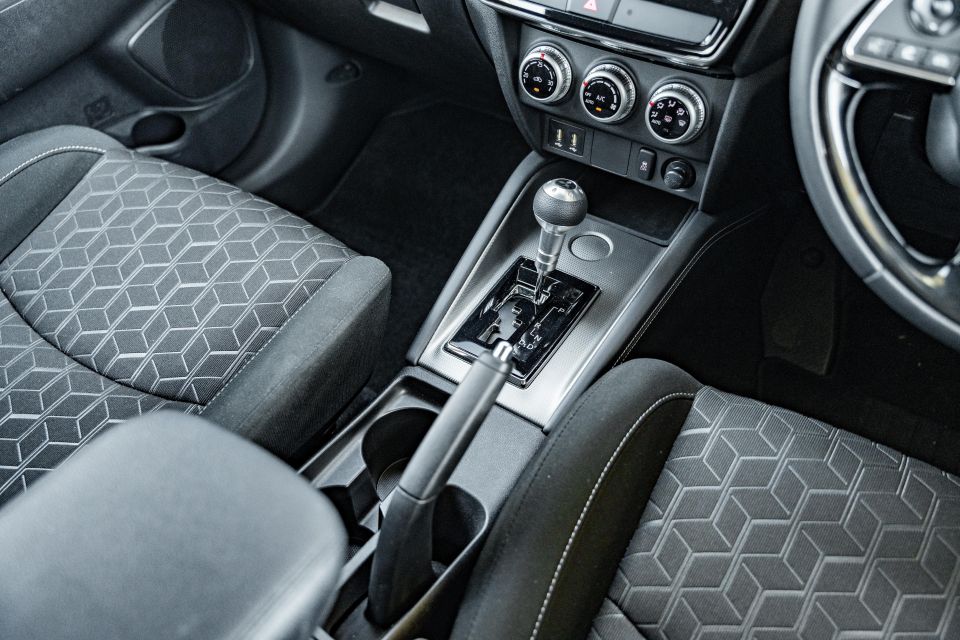
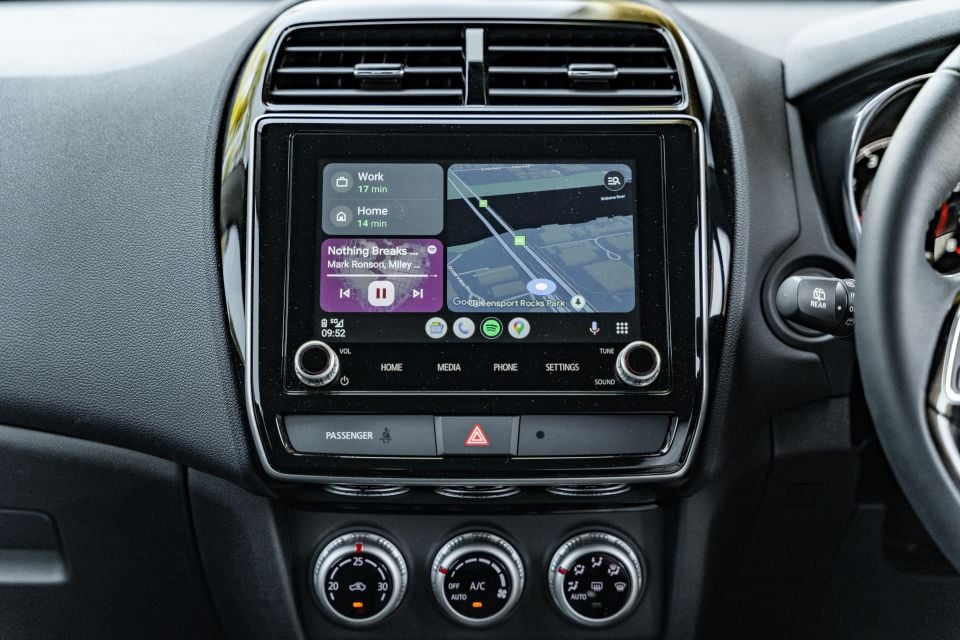
Also betraying the ASX’s age is the lack of a wireless phone charger or even a spot big enough to keep your phone. There’s a tray at the base of the centre console, but it won’t fit many of today’s large smartphones. You can put it in the centre console bin, while there’s also a decently sized glove compartment.
The gated shifter and manual handbrake are another couple of signs you’re in an old car, though the former is at least different from the one the ASX launched with back in 2010. Progress…
The cloth upholstery is attractive with its tessellating cubes pattern, and the front seats are comfortable though I couldn’t get an ideal seating position – I always felt like I was perched too high.
Material quality in the ASX is pretty good overall. Where many rivals don’t bother, Mitsubishi put squishy leatherette trim on the sides of the centre console to make it easier on your knees.
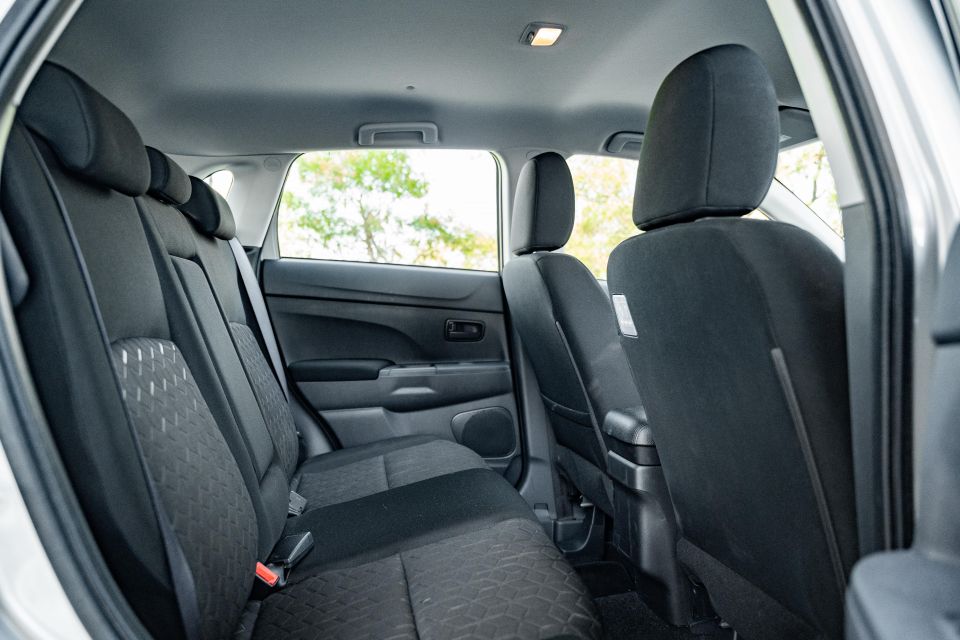
The tops of the front doors are finished in soft-touch plastic and while the piece of soft-touch trim across the front of the dashboard looks a bit stuck-on, the graining matches the hard plastic found on the dash top.
Step into the back and you’ll find plenty of legroom. At 180cm tall, I could comfortably sit behind my seating position. Headroom isn’t quite as impressive, and I only had a little bit of clearance. Taller passengers won’t be happy, with the roof appearing lower in the back than up front.
The rear-seat occupant may grumble. Their seat is ever so slightly higher, while there’s a little bit of a driveline hump to eat into their legroom.
Really, everyone back here will have something to grumble about as there are no air vents, nor are there any USB outlets. You get a fold-down armrest with cupholders, a map pocket on one seatback, bottle holders in the doors, and that’s it.
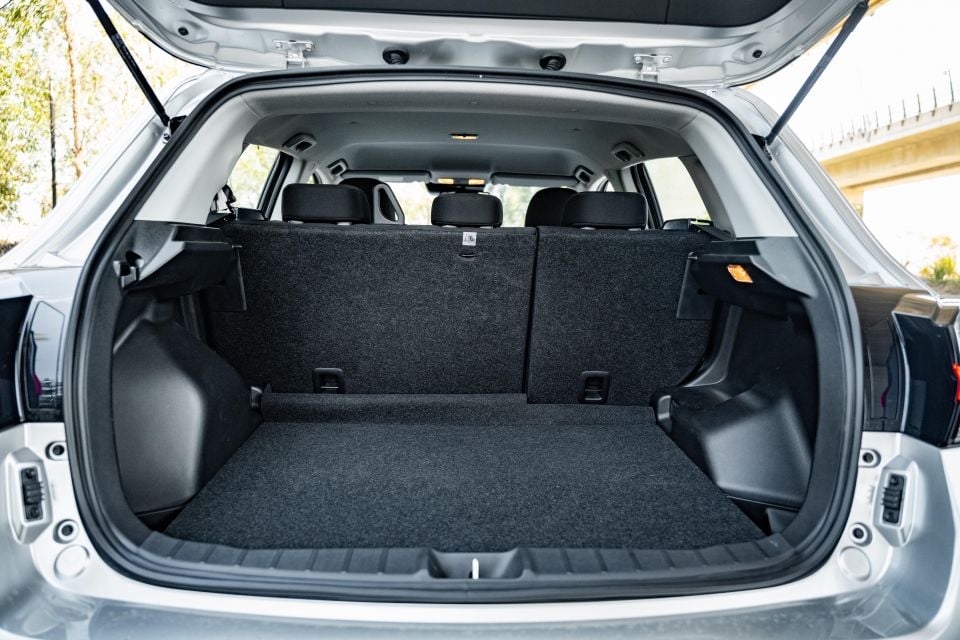
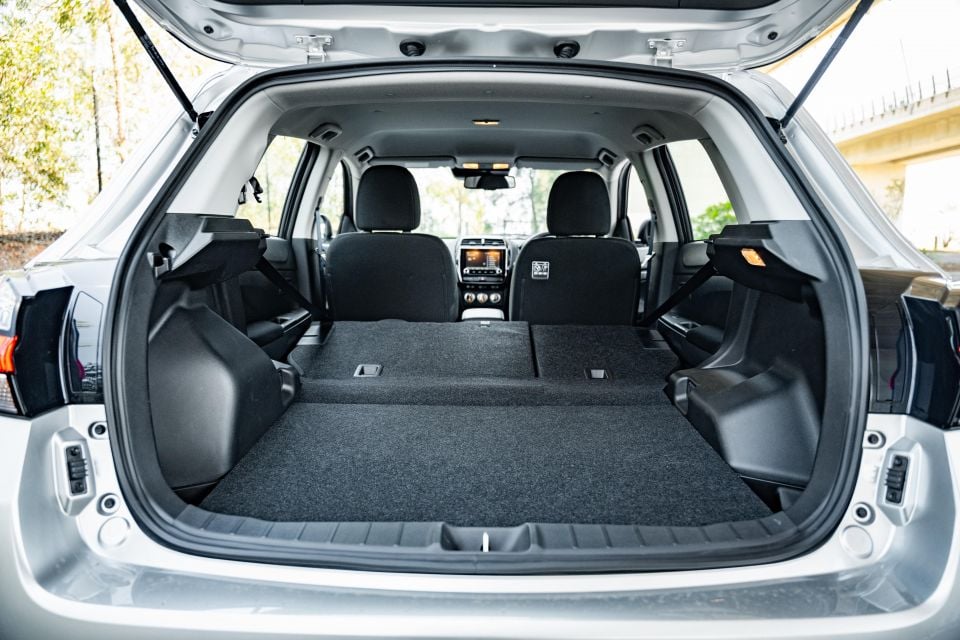
If you have small children, you’ll find ISOFIX child seat anchor points on the two outboard seats, and top-tether points for all three seats.
Open the tailgate and you’ll find a competitive 393 litres of luggage space, expanding to 1193 litres if you drop the 60:40 split/fold rear seats.
Under the boot floor is a space-saver spare.
| Dimension | Mitsubishi ASX ES |
|---|---|
| Length | 4365mm |
| Width | 1810mm |
| Height | 1640mm |
| Wheelbase | 2670mm |
| Boot capacity (VDA) | 393L (rear seats up) 1143-1193L (rear seats folded) |
To see how the Mitsubishi ASX lines up against the competition, check out our comparison tool.
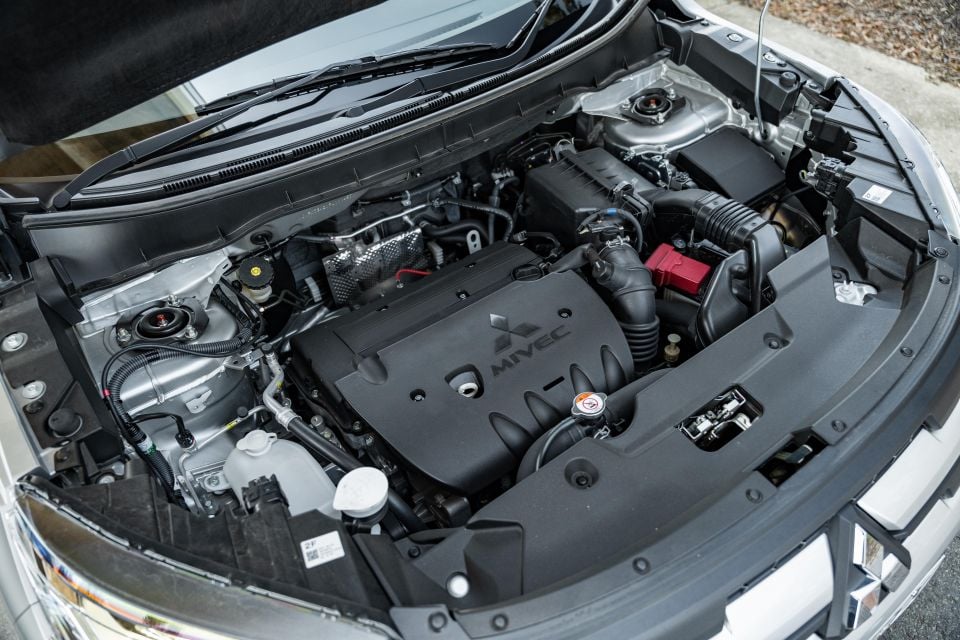
| Mitsubishi ASX ES | |
|---|---|
| Engine | 2.0L naturally aspirated 4cyl |
| Power | 110kW (6000rpm) |
| Engine torque | 197Nm (4200rpm) |
| Transmission | CVT automatic |
| Driven wheels | Front |
| Weight | 1384kg |
| Fuel economy (claim) | 7.6L/100km |
| Fuel economy (observed) | 8.3L/100km (inner-city, suburban and highway loop) 8.9L/100km (over the course of a week) |
| Fuel tank size | 63 litres |
| Fuel requirement | 91 RON |
| CO2 emissions | 176g/km |
| Emissions standard | Euro 5 |
| Maximum tow capacity | 1300kg (braked) |
| Maximum towball download | 130kg |
We would typically see the ASX hover around 9L/100km on the daily commute.
Many rivals have moved to smaller, turbocharged engines, and indeed the related Eclipse Cross packs a turbo 1.5-litre. Its claimed combined cycle fuel economy in front-wheel drive guise, however, is virtually the same at 7.3L/100km.
To see how the Mitsubishi ASX lines up against the competition, check out our comparison tool.
We’ve driven newer Korean SUVs with speed limit assist systems that won’t shut up, as well as Chinese SUVs with intrusive lane-keep assist and driver attention monitoring systems.
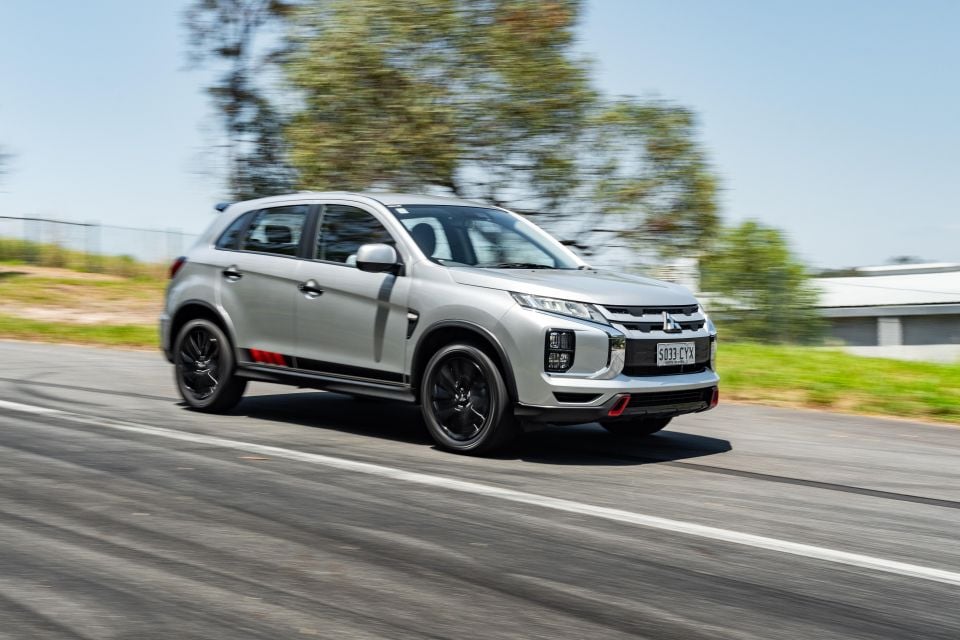
You may therefore find the Mitsubishi ASX, being as old as it is, a refreshingly simple alternative to those tech-laden rivals.
There’s autonomous emergency braking, which in a few months will be mandatory on all new cars in Australia anyway, but no blind-spot monitoring or rear cross-traffic alert – at least not on the ES.
There is a lane-departure warning system that alerts you if you cross a lane marking, but doesn’t actually nudge you back into place. You therefore don’t feel the steering wheel squirming like with many cars with lane-keep assist systems.
And yet despite this, the steering is the most awkward part of the ASX driving experience. There mightn’t be a nanny intervening to pull you back into your lane, but the steering feels like it’s unsettled anyway.
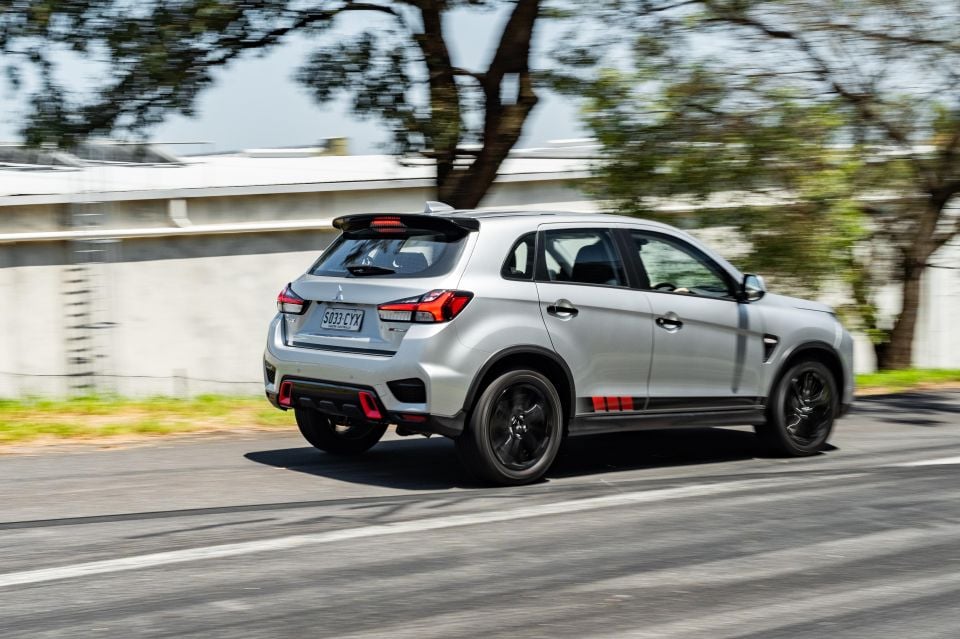
The ASX’s steering feels like you’re working knots out of it, with an oddly inconsistent weighting. It doesn’t feel fluid at all and can still feel heavy at low speeds – for example, when you’re negotiating a carpark.
The engine is rather gruff. The ticks you’ll often hear from an idling engine are more like loud snaps in the ASX, which seems to run rough. Prod the accelerator and you’re welcomed with a drone, with the CVT making it sound like you’re stuck in one very tall first gear.
That CVT does make the most out of the ASX’s outputs though, giving the Mitsubishi a relatively zippy feel off the line. The 2.0-litre can nevertheless still feel a little bit laboured at times, however, including when you’re driving on steeper grades.
Tyre roar is also present even on smoother surfaced roads at double-digit speeds, and becomes more pronounced on coarser-chip roads and at highway speeds. There’s a bit of wind noise around the mirrors, too.
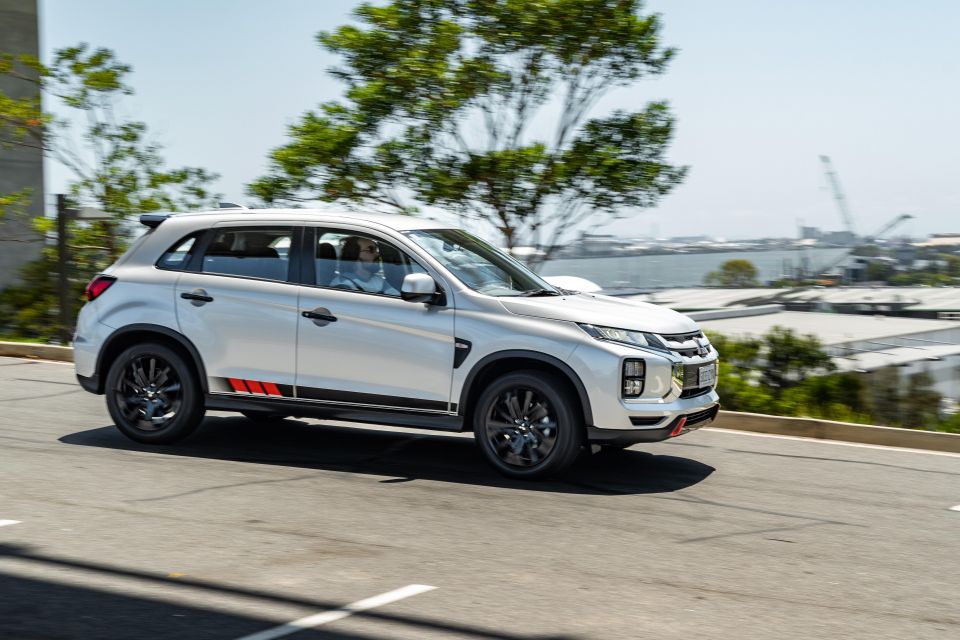
Ride comfort is decent, with the ASX managing some of Brisbane’s poorer roads without much fuss.
As for handling, don’t go expecting this to be as engaging as, say, a Suzuki Vitara. You feel the high centre of gravity and while it won’t fall over in a corner, it won’t spark much joy either.
The ASX and Eclipse Cross are the last vehicles still standing in Australia on the GS platform, co-developed by Mitsubishi and what was then DaimlerChrysler.
Other vehicles to use this platform included the Chrysler Sebring, Dodge Avenger and Caliber, and first-generation Jeep Compass.
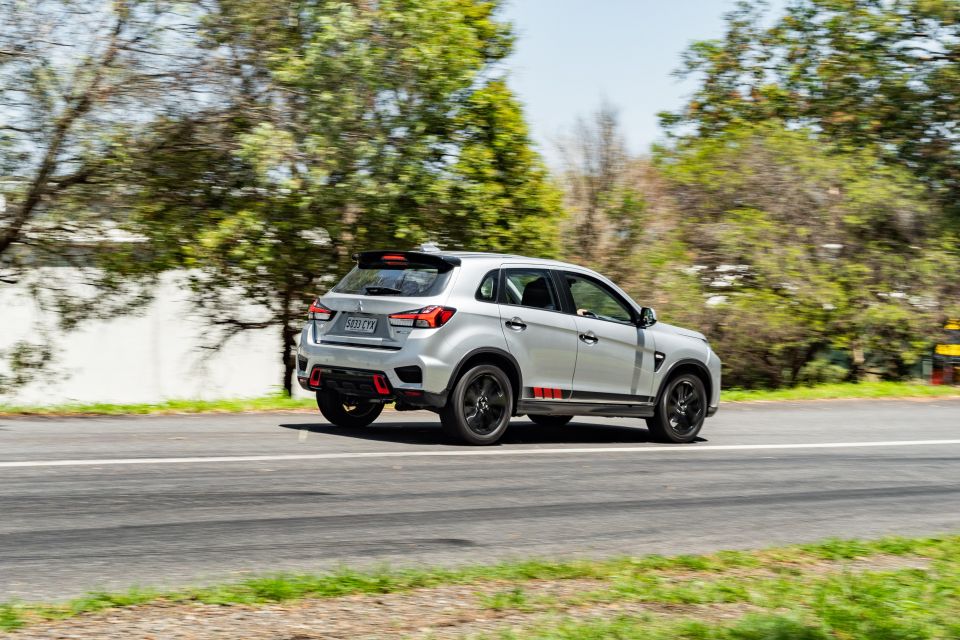
Where expert car reviews meet expert car buying – CarExpert gives you trusted advice, personalised service and real savings on your next new car.
That’s hardly a who’s who of talent, but then again Mitsubishi did use this platform for the Lancer Evolution. Swings and roundabouts…
The lack of features like adaptive cruise control and lane-keep assist is a bit retrograde, but the greatest omission of all is a digital speedometer. Seriously, Mitsubishi, would it have been so hard to fit one?
The ES – sans the ES Street package – strikes us as the best value of the ASX lineup.
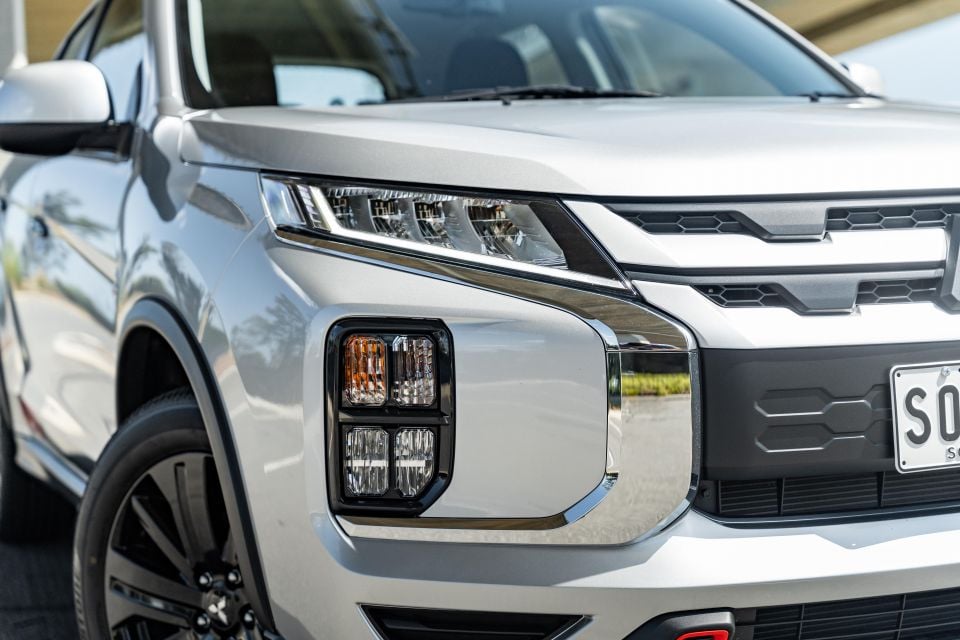

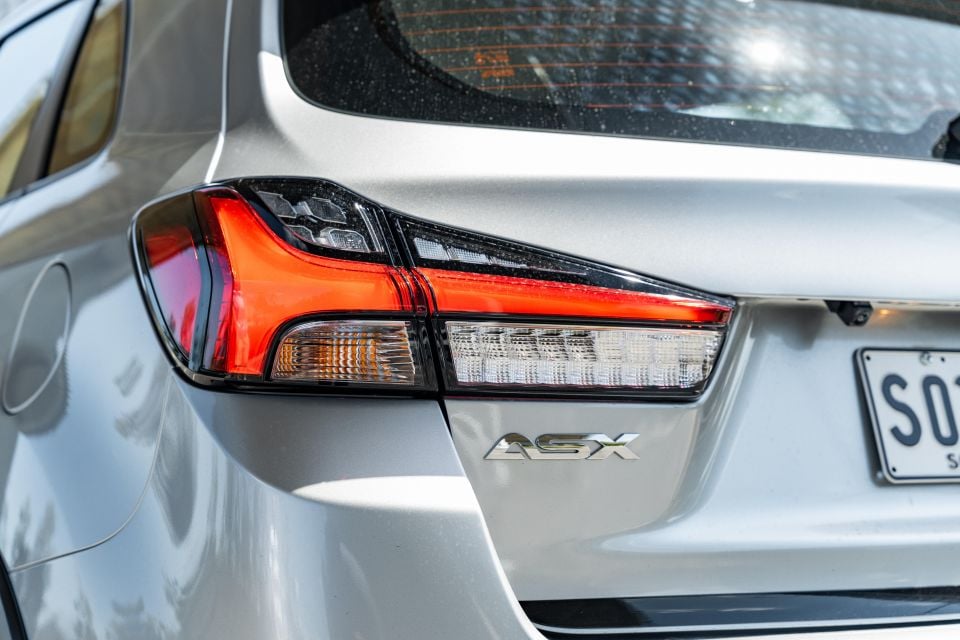
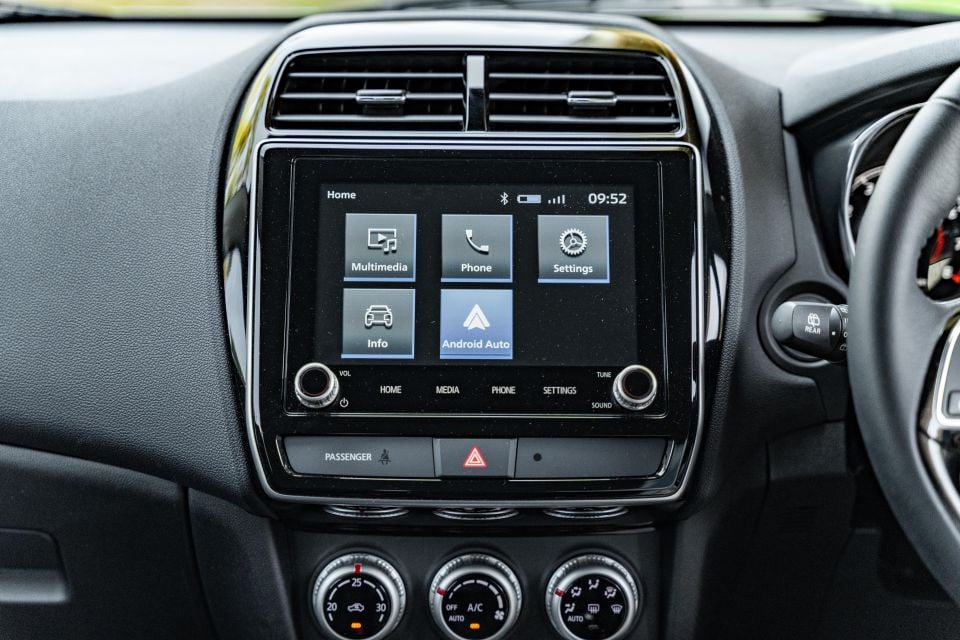
Mitsubishi ASX GS highlights:
ES adds:
Our ASX ES tester is equipped with the optional ES Street package which costs $2500.
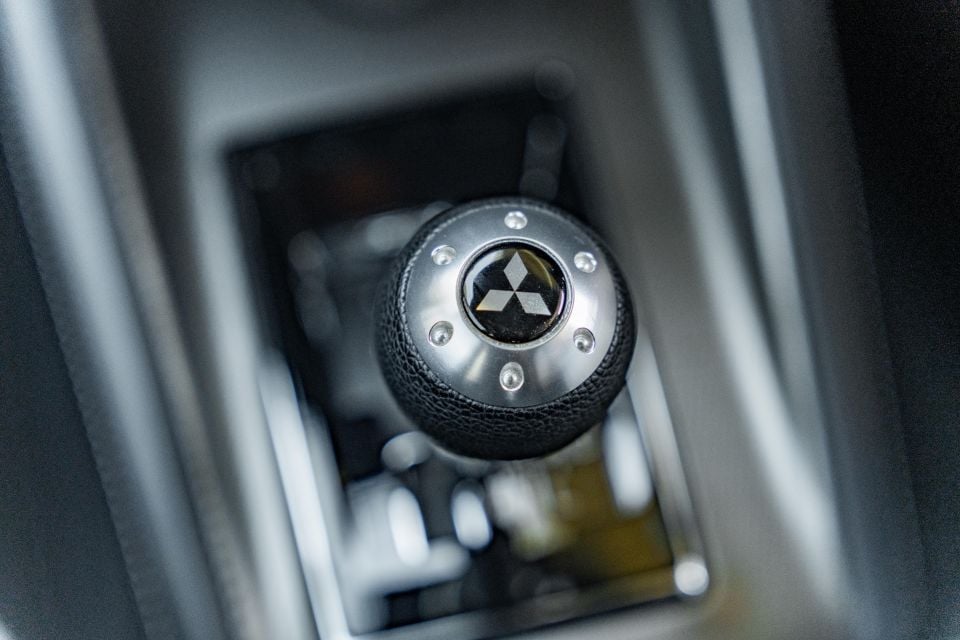
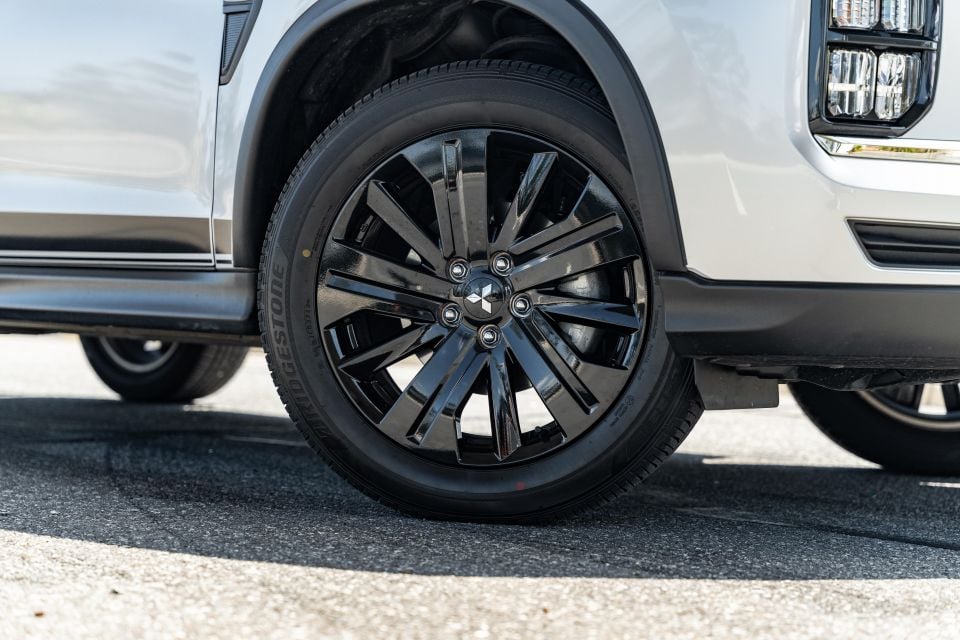
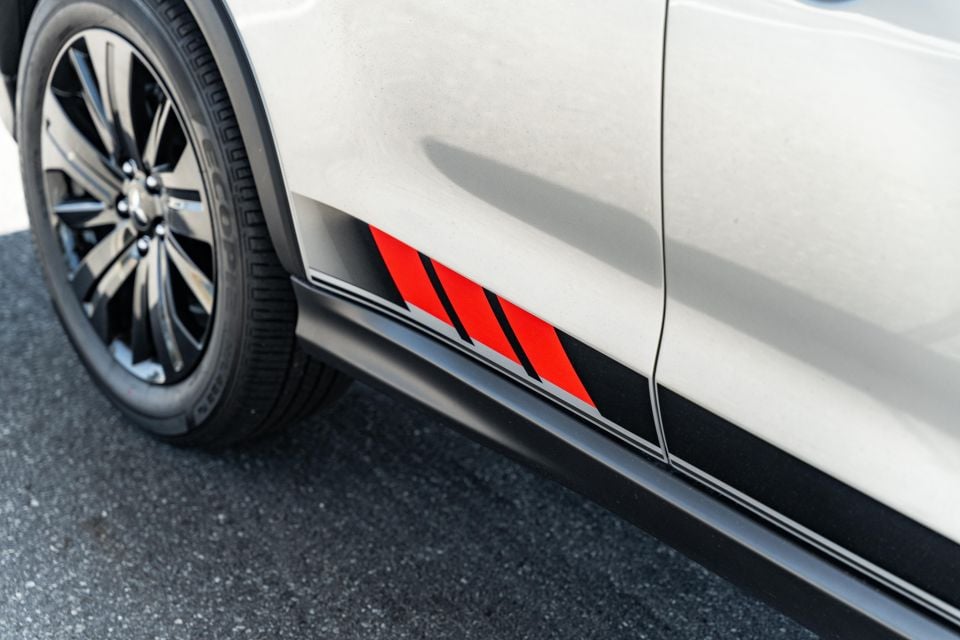
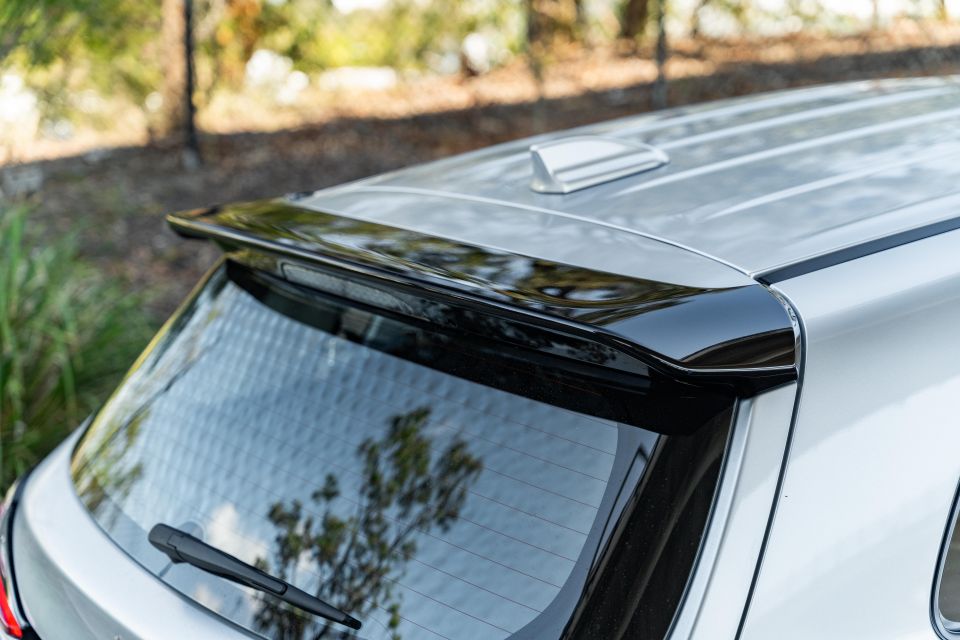
ES Street adds:
That’s hardly worth it for an extra $2500. If all you want is a slightly sportier look for the ASX, you could just get an MR variant which is cheaper than the ES with the Street Package.
When the Mitsubishi ASX was tested by ANCAP in 2014 it received a rating of five stars, though this has now lapsed meaning the car is now unrated.
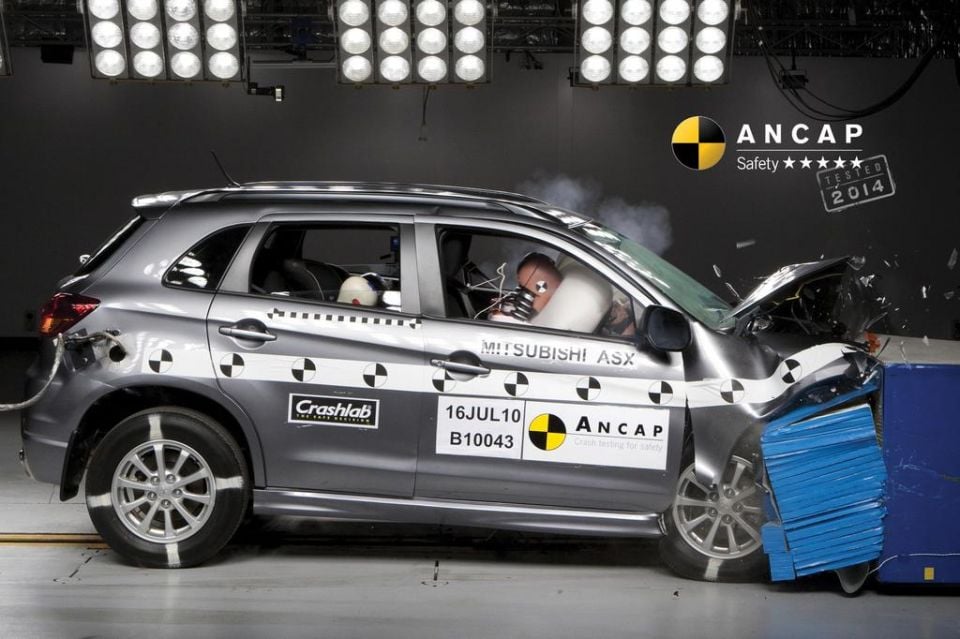
This rating from 2014 was based on a frontal offset score of 14.13 out of 16 and a side impact score of 16 out of 16. Whiplash and pedestrian protection were rated Good and Acceptable, respectively.
Standard safety equipment includes:
ES adds:
LS adds:
Mitsubishi offers 10 years of capped-price servicing, as well as a lengthy 10-year, 200,000km warranty. However, to take advantage of that you’ll need to service your ASX at a Mitsubishi dealership.
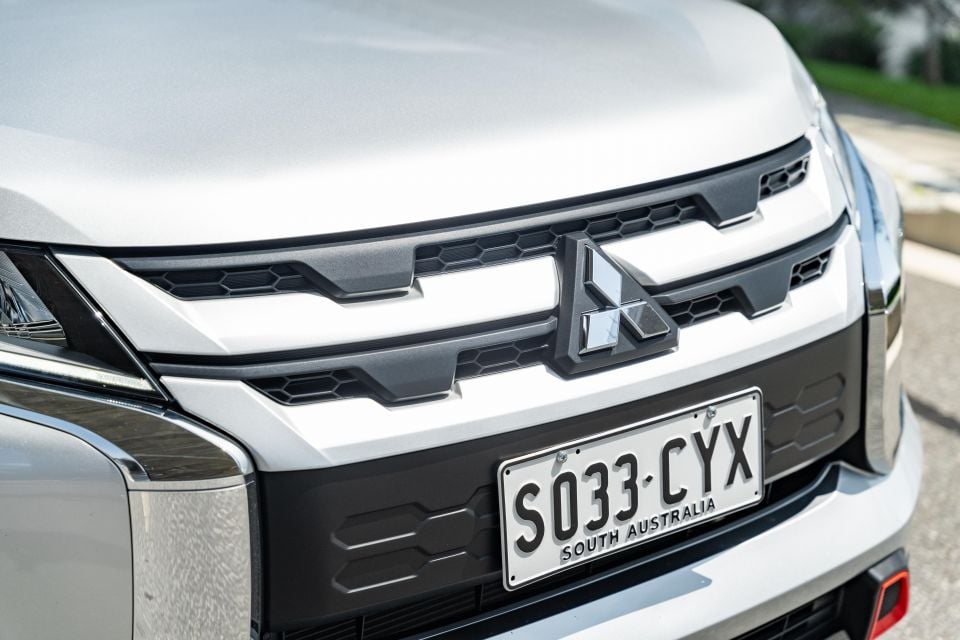
If you don’t continue servicing your ASX through Mitsubishi, the warranty drops to five years and 100,000km.
Scheduled servicing is required every 12 months or 15,000km – whichever comes first.
| Service interval | Price |
|---|---|
| 12 months/15,000km | $309 |
| 24 months/30,000km | $409 |
| 36 months/45,000km | $409 |
| 48 months/60,000km | $409 |
| 60 months/75,000km | $409 |
| 72 months/90,000km | $719 |
| 84 months/105,000km | $409 |
| 96 months/120,000km | $719 |
| 108 months/135,000km | $509 |
| 120 months/150,000km | $719 |
| Total | $5020 |
To see how the Mitsubishi ASX lines up against the competition, check out our comparison tool.
Buy your new car without the stress. It's fast, simple and completely free.

Great service from Travis and team, second time I have used this business would not hesitate to recommend them to anyone
Craig C.
Purchased a Ford Ranger in Sunshine Coast, QLD
CarExpert helped Craig save $7,224 on his Ford Ranger, now let us save you on your next new car.
Get your BEST priceWe often hear enthusiasts say, “Oh, if only you could still buy a new [BLANK]! If they had kept building it, I’d buy one now.”
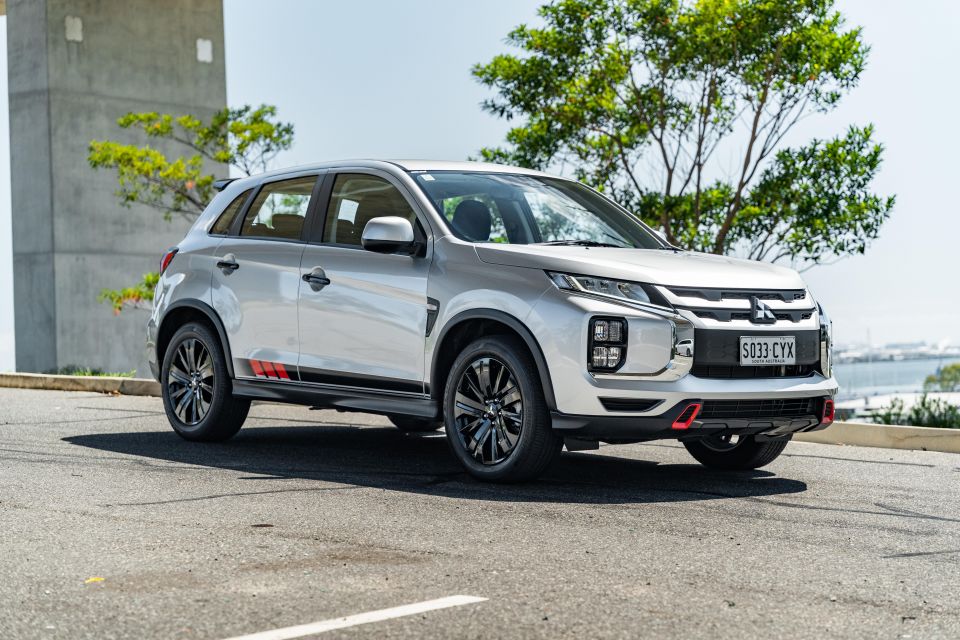
We think many enthusiasts who say this are referring to cars like the E39 5 Series or any V8 Commodore sedan, and not the Mitsubishi ASX, a car that wasn’t exactly a class-leader in 2010 and has well and truly fallen off the pace since.
The Mitsubishi ASX is so very old, and it has scarcely changed during its very long tenure on the market. It makes more sense to buy a near-new one because you won’t be missing out on anything. Nothing has changed.
It does say something about the arguable lack of advancement in this segment, though, that the Mitsubishi ASX doesn’t feel like a complete relic.
The styling has held up surprisingly well – what car usually looks better four facelifts later? – and the interior layout and material quality remain quite agreeable, while the warranty is long and the price is cheap.
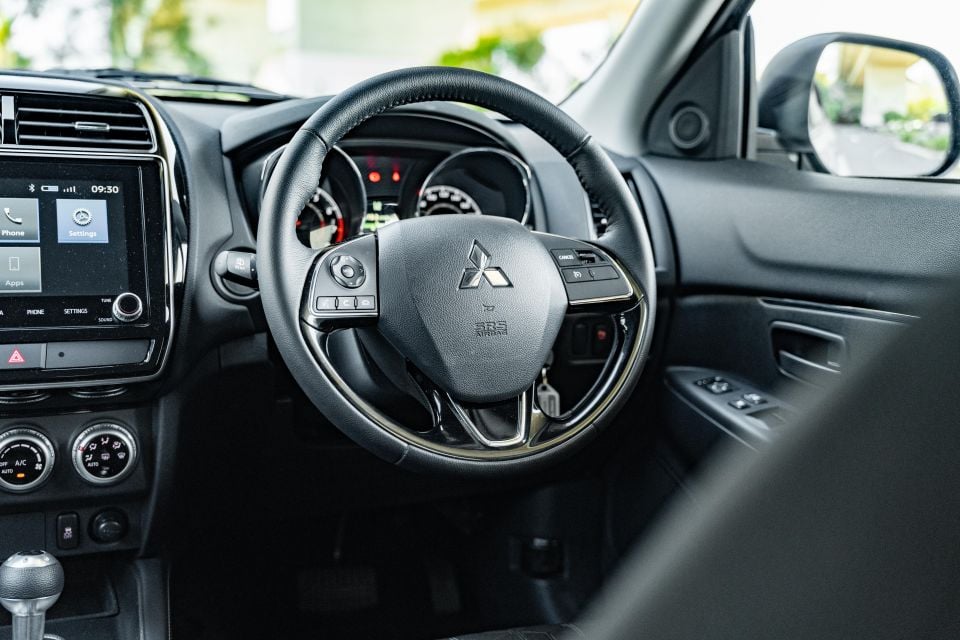
Rivals have packed in more safety equipment, but it hasn’t always been ideally calibrated. And many of its Japanese and Korean rivals wear a much higher price tag than the ASX.
While Chinese cars are rising up the sales charts, we know there are plenty of buyers out there who don’t want to take the chance. Ultimately, though, cars like the Chery Omoda 5 and GWM Haval Jolion are the most direct competition for the ASX on size and price. So you’ll need to decide whether you’ll take the chance, or stick with the proven but dated ASX.
Mitsubishi has to make a choice, too. It can’t keep making the ASX forever, and it needs to decide whether to bring the European ASX, a rebadged Renault Captur, to Australia or whether to develop a version of its new Xforce for our market’s stricter safety standards.
For now, it has this new old car. If you’re keen on an ASX, our advice is to stick to an ES and don’t add any accessories like this ES Street package.
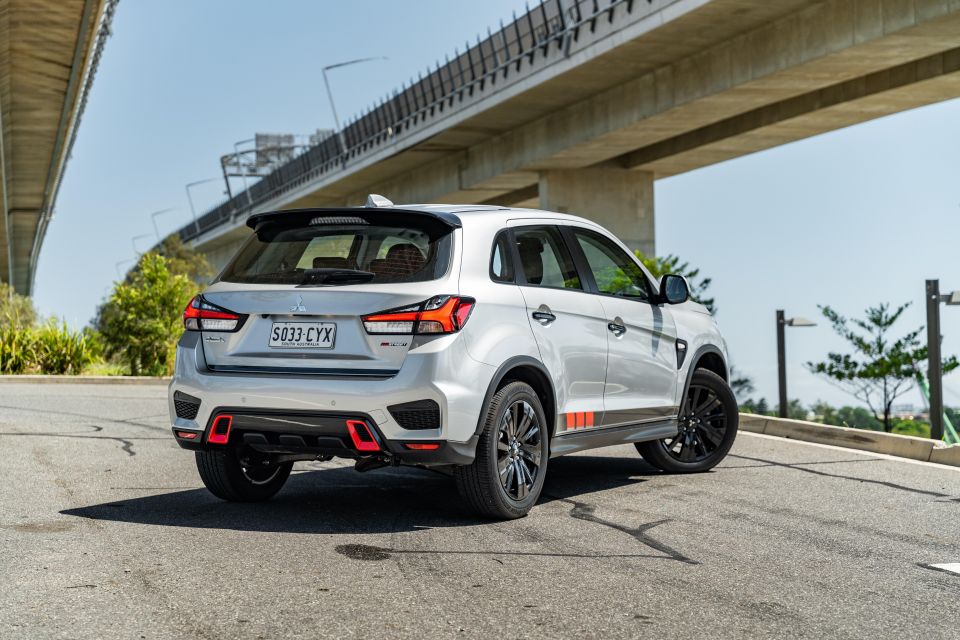
Interested in buying a Mitsubishi ASX? Get in touch with one of CarExpert’s trusted dealers here
Click the images for the full gallery
Where expert car reviews meet expert car buying – CarExpert gives you trusted advice, personalised service and real savings on your next new car.
William Stopford is an automotive journalist based in Brisbane, Australia. William is a Business/Journalism graduate from the Queensland University of Technology who loves to travel, briefly lived in the US, and has a particular interest in the American car industry.


James Wong
6 Days Ago
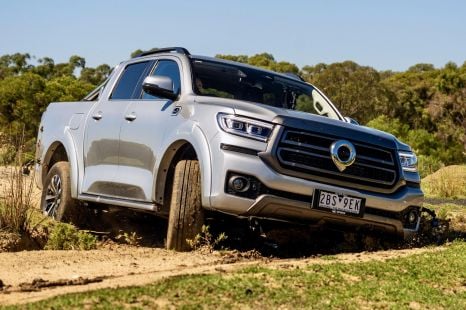

Max Davies
5 Days Ago
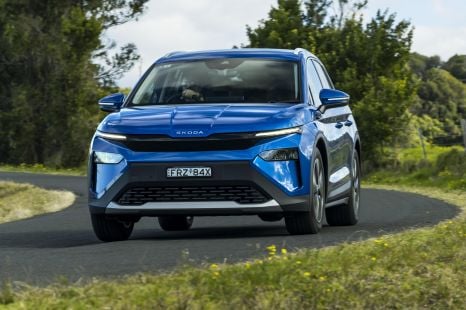

Josh Nevett
3 Days Ago
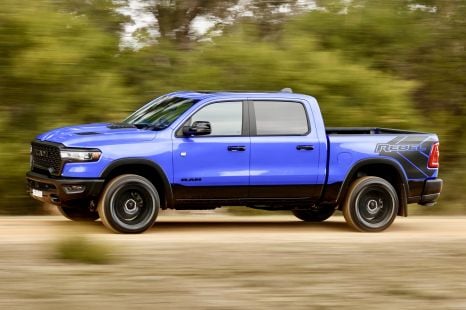

Max Davies
3 Days Ago


Max Davies
2 Days Ago
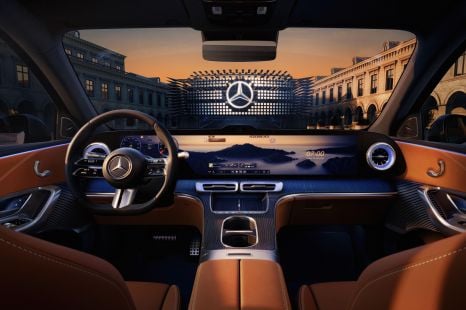

Derek Fung
2 Days Ago